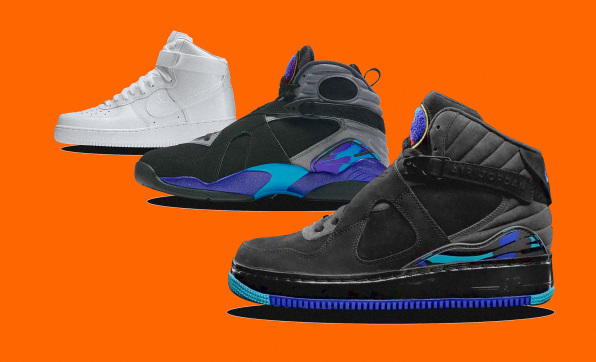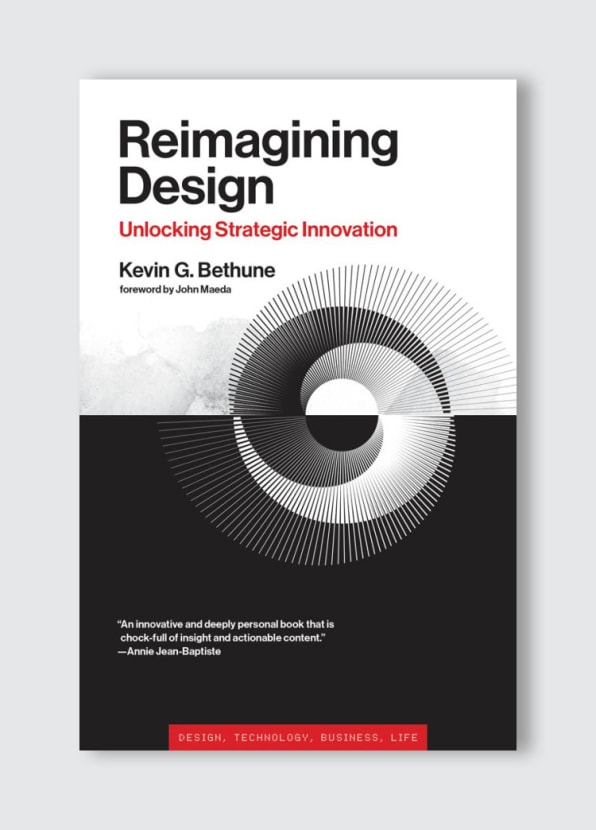[ad_1]
By Kevin G. Bethune 5 minute Read
Nike gave me my first indoctrination into design. Before entering global footwear, I had an impression that designers were the ones with the cool clothes, coming in late at 10 a.m., hitting the best parties in town, flying to exotic locations to collect inspiration, and having fun sketching all day in their designer cubicles in trendy studio spaces.
If there was a slider between fun and hard work, their lives seemed to skew toward an even blend, while the rest of us had tipped the scales to the more pragmatic end of the spectrum.
But when I actually got into global footwear in 2007 after more than a year as a financial manager there, I realized how wrong I was to hold these common misperceptions. The footwear process was so much more than watching a designer field a brief from category leadership and sketch pretty pictures.
One of my friends at Nike was Dr. D’Wayne Edwards, who at the time was the footwear design director for the Jordan brand. Upon learning my story and seeing my raw explorations, he decided to give me a chance to apply my raw creative skill to a real product. This was my one shot to execute footwear design under his mentorship.
He assigned me a brief that didn’t have a home because there weren’t enough designers to take it on. Based on the coinciding anniversaries of two iconic shoes, the Air Jordan 8 and the Air Force 1, the Jordan brand wanted me to execute a “fusion” story of the two shoes together. They couldn’t have picked two more radically different shoe designs to work from—but here was my opportunity.

For the next several months, I met D’Wayne early in the morning to soak up as much tutelage as I could, then we would go do our respective day jobs, and then I would work on his assignments into the wee hours of the evening. After a year of working together, we launched two different shoes into the market in multiple colorways. That opportunity resulted in more doors being opened to help other Nike groups with my fledgling designs skills.
As I made friends with more and more designers through our product process initiatives, I grew to realize how much they were spinning multiple plates to keep the business afloat. Designers were just as critical in the machine as the footwear engineers, factory developers, and category business leaders.
When they received a brief, they had to wrestle with product marketing and consumer insights to distill clarity of the performance benefits and emotional cues that would get a customer to understand the product opportunity. This was not an easy thing to negotiate. They had some room to forge new territory but had to be careful not to move the needle too far away from market convention and throw the customer off (e.g., most customers expect to see laces in their sneakers). Such a move might result in lost business, and with Nike’s volume and brand reputation, disrupting market convention was a serious consideration.
Once the briefs and opportunities were clearly understood, there was the pressure to produce a lot of answers in the form of low-fidelity sketches. Lots of them. Their creative director might expect to see 30 to 50 new variations against a given brief by the end of the workday. After strategically timed design reviews, the designer would have navigated enough ideas and circular feedback to begin to turn a corner toward a more concise solution that hopefully answered the opportunities in the brief.
What I just described was one process for just one sneaker design. Remember, most sneaker brands launch different models over four seasons in a calendar year with particular emphasis on key moments like back to school or the holidays. Therefore, a footwear designer might be juggling four different model offerings (at least) over four seasons, with each sneaker being at a different stage of its design progression.
One hour of the day might be spent cranking out divergent sketches for next spring; another hour might be spent in Photoshop fine-tuning a design for fall; and the final hours might involve doing redline revisions for the coming spring and summer. The designer may also feel pressure to address incremental innovation opportunities on top of their in-line work, which requires even longer lead times.
Some designers had to nurture key athlete relationships, and respond to high-profile athlete needs and pivot their day on a moment’s notice if, say, Serena Williams, Mia Hamm, or Michael Jordan paid a visit.
What I really grew to appreciate was Nike’s investment in their product triad model: a product line manager (i.e., product marketer or product manager), a development engineer (who engages with factory partners with an eye toward downstream manufacturing challenges), and a footwear designer had equal standing in their collaboration as a triad unit. No footwear design moves forward without the intimate involvement of these multidisciplinary triads or pods.
Every role was critical, and one discipline could not dominate the other. I think this was subtly reinforced when employees looked up the ranks of Nike leadership. They saw themselves in every rung of the corporate ladder.

A designer could look up to a creative director to unblock things, advocate for their career, or stand up for them in the face of conflict. A designer could look up to the C-level suite and imagine themselves landing there one day because Nike had a chief design officer, and even the CEO at the time of my employment, Mark Parker, had a background in footwear design.
The values of the organization spoke to the power of constructive critique, collaboration, and even competition across the disciplines to arrive at better answers. Design was a critical ingredient for problem-solving at Nike, at every level and in every area of the organization.
[ad_2]
Source link


More Stories
4 Delightful Garden Design Ideas for Your Hospitality Business
Real Estate Investing Contracts on Toilet Paper
Web Design Facts – Following the Golden Rules of Website Design